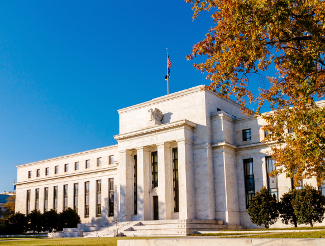Markets had been pricing in a December Fed rate hike all year. But with President Trump’s comments expressing his disappointment at the Fed’s hiking of rates this year, and Fed Chairman Jay Powell’s comments attempting to placate both the markets and the President, many on Wall Street were hopeful that the Fed would dispense with hiking rates last week. That’s why the Dow Jones was up 350 points before the Fed’s press release, with markets hopeful for a Christmas miracle.
Alas, ‘twas not to be. The Fed stuck to its guns and decided to hike rates another 25 basis points, to 2.25-2.50%. Markets immediately plummeted once the press release was published and the Dow ended the day down nearly 400 points. That’s quite a swing, but it shouldn’t have come as a surprise. The “Powell Put” was only a pipe dream in the eyes of Wall Street traders.
But the Fed did seem to change its mind about the long-term direction of monetary policy. In its projections of the future of the federal funds rate, Fed policymakers have dropped their predictions significantly. The Fed Board of Governors and regional presidents now see the median federal funds rate as being 2.9% in 2019 versus 3.1%, and 3.1% in 2020 and 2021 versus 3.4%.
The well-known “dot plot” changed significantly too. Whereas in September 9 of the 16 FOMC meeting participants foresaw the midpoint of the federal funds rate being above 3.0%, in December only 6 of 17 participants saw the federal funds rate being above 3.0%. What that means is that FOMC participants have changed their minds about the future course of monetary policy, and that we’re likely to see at most two more rate hikes next year, to about 3%.
Whether it was pressure from the President or pressure from markets that caused that change of mind is hard to say, but it is a definite change of mind. It’s changed too from June, whose projections and dot plot were similar to September’s.
The big takeaway for investors is that the Fed can’t be trusted to stick to any one course of monetary policy for any period of time. Even the slightest bit of pressure or the slightest bit of nervousness from markets and the Fed will take its foot off the brakes. With a stock market that continues to weaken and the first hints of recession already evident, it’s far more likely that the Fed will ease monetary policy over the next 2-3 years than that it will continue to tighten.
Investors need to be prepared for both a stock market crash and a weakening of the dollar when the Fed reacts to the worsening economy. By investing in gold they can protect themselves against both of those things happening, as gold tends to rise in value as stocks decline and maintains its purchasing power even as the dollar loses value. But the time to do that is now, before things get too bad. Once things start going downhill everyone is going to want to get out at the same time. Get ahead of the curve and protect your assets right now.
This article was originally posted on Goldco.



